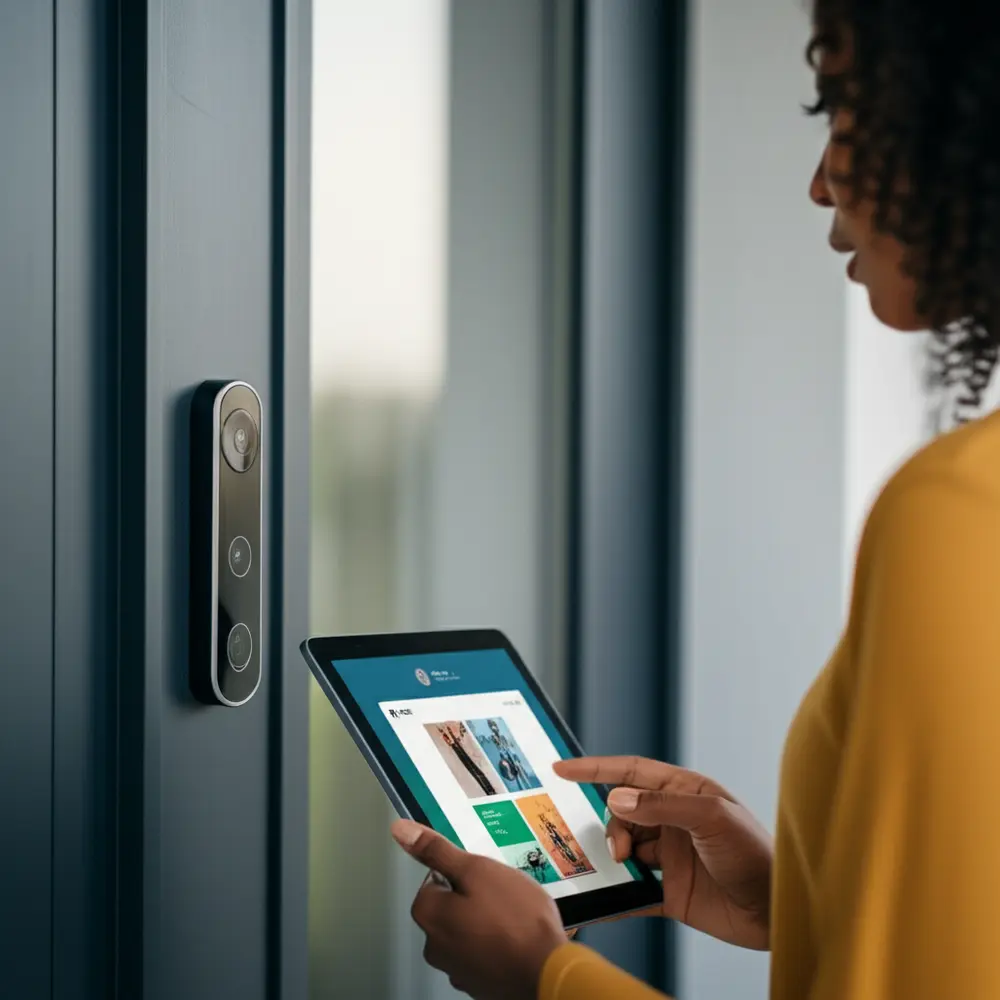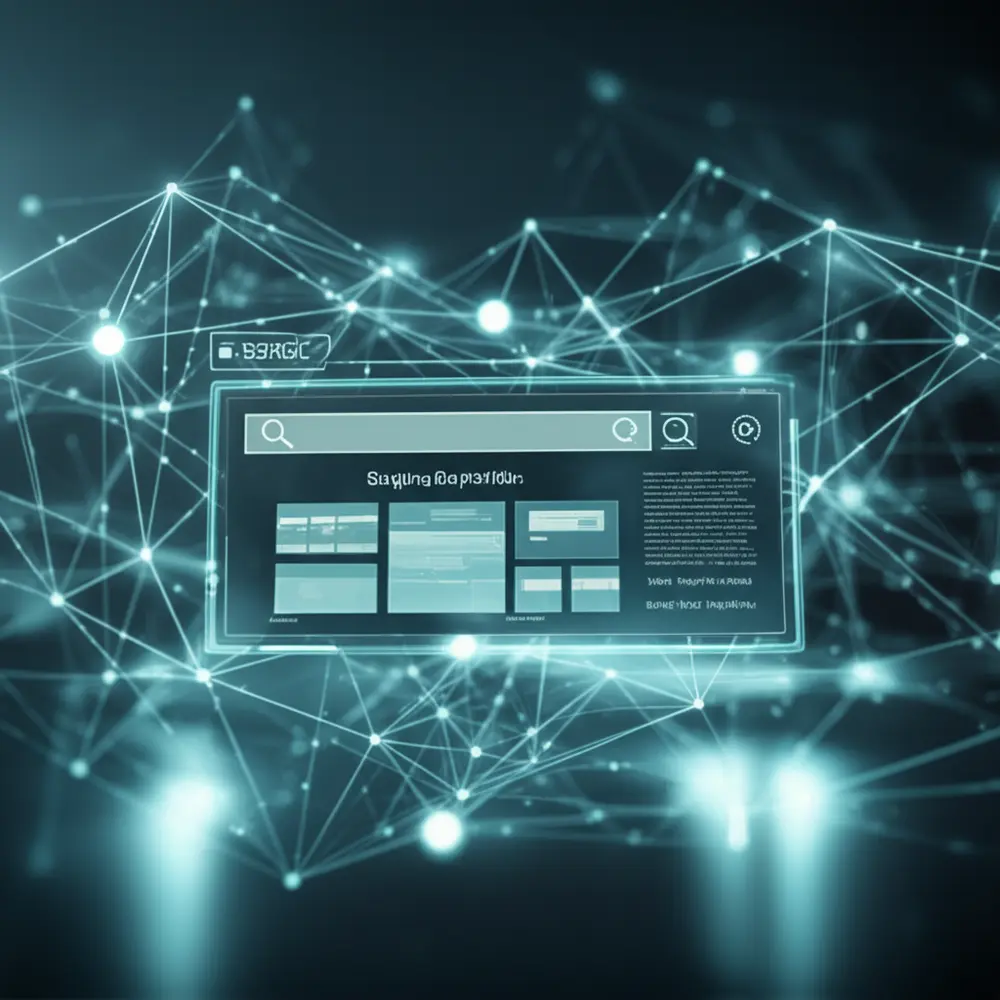Are your sales teams struggling to hit monthly targets despite relentless effort? The traditional knock on the door might feel less effective in a digitally saturated world. You need more than persistence; you need precision and powerful tools.
You face the challenge of bridging personal connection with digital efficiency, often losing valuable time on unqualified leads. This outdated approach drains resources and demotivates your dedicated professionals.
Imagine transforming every interaction into a highly qualified opportunity. By integrating cutting-edge digital strategies, you empower your sales force to connect smarter, close faster, and consistently exceed expectations.
The Evolution of Door-to-Door Sales in the Digital Age
The landscape of direct sales has undergone a profound transformation. While the essence of human connection remains paramount, successful professionals now integrate digital tools. This evolution redefines the traditional “knock,” enhancing efficiency and broadening reach.
You must shift from random cold calls to strategic, informed conversations. Modern sales methodology prioritizes understanding your prospect before an in-person visit. This ensures every interaction is targeted and productive, maximizing your valuable time.
The core strength of door-to-door sales lies in this direct human-to-human engagement. It allows you to build rapport swiftly, fostering trust that impersonal digital channels often struggle to achieve. Customers feel genuinely valued and understood by this personal approach.
You gain instant feedback on customer needs and objections during face-to-face meetings. This real-time interaction allows you to adapt your pitch dynamically. Such agility provides a significant advantage over delayed or indirect digital responses.
Beyond spoken words, you can read invaluable non-verbal cues—body language and expressions. These subtle signals offer profound insights into a prospect’s true feelings. This deeper understanding guides your sales process more effectively, leading to better outcomes.
Traditional Outreach vs. Hybrid Sales Methodology
Traditional door-to-door sales relied heavily on sheer volume and resilience. You would knock on many doors hoping for a few receptive prospects. This method, while sometimes effective, often proved inefficient and resource-intensive.
In contrast, a hybrid sales methodology strategically blends physical presence with digital intelligence. You leverage online data to identify and qualify leads before a visit. This ensures your physical presence is reserved for high-potential prospects.
Case Study: GlobalConnect Logistics. GlobalConnect Logistics, a freight forwarding company, initially struggled with cold visits. By adopting a hybrid model, they used LinkedIn Sales Navigator to identify decision-makers in target industries. This pre-screening led to a 30% increase in qualified meetings and a 15% reduction in wasted travel time.
This integrated approach allows you to tailor pitches specifically to individual needs, building rapport faster. It transforms cold calls into warm consultations, significantly increasing your conversion rates. The hybrid model is not just an upgrade; it is a necessity.
Strategic Digital Prospecting: The New Knock
Digital prospecting forms the bedrock of modern door-to-door strategies. You now use platforms like LinkedIn, social media, and local business directories. These tools help identify potential clients and gather crucial information before any physical approach.
This careful preparation refines your target audience, moving beyond mass appeals to precise outreach. By understanding prospects digitally, you tailor your initial message and offer. This ensures immediate relevance and captures attention more effectively.
For instance, researching a company’s recent news or an individual’s professional background provides conversation starters. This intelligence prevents generic pitches, allowing you to connect on a deeper, more informed level. It’s about being prepared, not just present.
You can identify specific pain points or needs a prospect might have from their online activity. This insight empowers you to present your solution as a direct answer to their challenges. Your value proposition becomes immediately clear and compelling.
Industry studies indicate that pre-researched sales calls have a 20% higher success rate compared to cold calls. This demonstrates the tangible impact of digital prospecting on your sales performance. It’s a fundamental shift in how you initiate contact.
Manual Research vs. CRM Automation
Manually sifting through public records and social media profiles is time-consuming. You might miss critical information or spend hours on unqualified leads. This approach often leads to burnout and inconsistent results for your sales team.
CRM platforms with integrated lead scoring and data enrichment tools automate much of this research. They consolidate prospect data, track interactions, and identify high-value opportunities. This frees your team to focus on selling, not just searching.
Case Study: TechSolutions Pro. TechSolutions Pro, an IT consultancy, manually researched leads, leading to inconsistent pipelines. Implementing a CRM with AI-driven lead scoring, they now automatically prioritize prospects. This resulted in a 25% increase in pipeline velocity and a 10% improvement in sales team efficiency within six months.
CRM automation provides a centralized hub for all prospect information, ensuring data consistency and accessibility. You can access comprehensive profiles, interaction histories, and potential needs at a glance. This empowers faster, more informed decision-making.
Furthermore, these systems can integrate with other tools, creating a seamless workflow from prospecting to closing. You minimize manual data entry and reduce the risk of errors. This holistic view enhances your entire sales methodology, driving better outcomes.
Mastering Digital Engagement and Communication
Once you identify prospects, modern tactics involve digital engagement to warm them up. Personalized emails, direct messages, or even short video messages establish initial rapport. This pre-engagement builds familiarity and trust before an on-site visit.
Email remains crucial for formal proposals, detailed information, and contract sharing. It provides a documented, professional communication trail. You use it to deliver comprehensive information that might be too extensive for instant messaging platforms.
Instant messaging, particularly WhatsApp, offers a direct, personal channel for quick follow-ups. Prospects appreciate its immediacy and conversational nature in today’s fast-paced world. You can answer quick queries and provide timely updates effortlessly.
For sales teams, a Multi-User WhatsApp solution becomes invaluable. It allows multiple reps to manage conversations from a single number. This ensures continuity and professional handling of all inquiries, preventing missed opportunities and improving response times.
This collaborative approach ensures consistent messaging and follow-up, a practical tip for any team leveraging digital tools. You maintain a unified brand voice while empowering individual reps to manage their leads efficiently. It’s about teamwork, even in direct sales.
Email vs. Instant Messaging: A Practical Comparison
Email is your go-to for structured, detailed communication, especially for B2B sales. You use it for formal introductions, comprehensive proposals, and sharing lengthy documents. It conveys professionalism and allows for asynchronous, thought-out responses.
However, email open rates can be low, and messages might get lost in cluttered inboxes. Your immediate follow-ups or urgent questions might face delays. It requires more effort from the prospect to read and respond, potentially slowing down the sales cycle.
Instant messaging, like WhatsApp, provides unparalleled immediacy and directness. You can send quick reminders, answer simple questions, and confirm appointments. Its informal nature fosters a more personal and approachable connection with prospects.
Yet, instant messaging might lack the formality required for complex deal negotiations or sensitive information sharing. You risk unprofessionalism if messages are not carefully crafted. It suits quick, concise interactions rather than extensive discussions.
Case Study: Clínica Vitalis. Clínica Vitalis, a specialized health clinic, found traditional appointment confirmations via email had a 15% no-show rate. By integrating Multi-User WhatsApp, they sent personalized reminders and answered pre-appointment questions instantly. This reduced no-shows by 20% and improved patient satisfaction by 10%.
Therefore, you must strategically combine both. Use email for documentation and formality, and instant messaging for rapid, personal engagement. This dual-channel approach covers all bases, ensuring effective communication throughout the sales journey.
Optimizing On-Site Visits and Sales Methodology
Moving from digital engagement to physical interaction requires a strategic pre-approach. Instead of unannounced visits, your goal is to secure a pre-scheduled appointment. Digital communication facilitates this by allowing you to propose convenient times.
This respect for the prospect’s time is a hallmark of the new sales methodology. It significantly increases the likelihood of a productive meeting, as both parties are prepared. Consequently, your visit becomes a consultation rather than an interruption.
Navigation apps are indispensable for planning efficient routes and minimizing travel time. You can pre-plan visits, adjust dynamically, and focus more on selling. This logistical advantage is a key practical tip for maximizing your field sales productivity.
Beyond navigation, digital presentations on tablets or laptops elevate your sales pitch. Interactive brochures, videos, and personalized content make a compelling impression. This digital approach is more professional and adaptable than traditional printed materials.
The ultimate goal remains the on-site closing, but now with a significant advantage. Your digital groundwork ensures you arrive armed with insight, ready to address specific needs uncovered during prospecting. This informed approach makes your physical interaction more impactful.
Traditional Pitches vs. Data-Driven Presentations
Traditional sales pitches often relied on generic scripts and broad benefit statements. You presented the same information to every prospect, regardless of their specific context. This often led to disengagement and a lack of perceived relevance.
Data-driven presentations, conversely, are highly personalized and impactful. You leverage pre-researched insights about the prospect’s business, industry, or personal needs. This allows you to highlight benefits most relevant to their unique challenges.
For example, if you know a business struggles with inventory management, your presentation emphasizes your product’s inventory tracking features. You quantify potential savings or efficiency gains specifically for their operation. This resonates deeply.
Case Study: Constructora Horizonte. Constructora Horizonte, a mid-sized construction company, struggled with securing new projects. They shifted from generic brochures to interactive tablet presentations showing ROI projections based on a client’s specific project size. This improved their budget closing rate by 22% within one quarter.
Integrating customer testimonials or case studies digitally further reinforces your claims. You can show relevant examples that mirror the prospect’s situation, building immediate credibility. This approach transforms your pitch into a tailored solution discussion.
Seamless Follow-Up and Relationship Nurturing
Persistence is key in sales, and digital tools make follow-up seamless and effective. Post-visit, you can send relevant resources, schedule virtual meetings, or maintain communication through preferred digital channels. This nurtures relationships beyond the initial meeting.
Automated CRM sequences can trigger personalized follow-up emails or tasks for your reps. You ensure no lead falls through the cracks, maintaining consistent engagement over time. This systematic approach frees your team from manual tracking burdens.
Beyond sales, digital follow-ups strengthen customer relationships, fostering long-term loyalty. You can provide post-purchase support, share valuable industry insights, or simply check in. This demonstrates ongoing commitment, not just transactional interest.
The ability to share digital brochures, video tutorials, or links to testimonials instantly reinforces your value proposition. Prospects can revisit information at their convenience, solidifying their understanding and trust in your offerings.
This persistent, yet non-intrusive, strategy is a hallmark of successful door-to-door sales digital campaigns. You maintain engagement without overwhelming the prospect, patiently guiding them through the sales funnel. It’s about consistent value delivery.
Individual Tools vs. Integrated Solutions (Multi-User WhatsApp)
Relying on individual communication tools—separate email clients, personal WhatsApp, or standalone CRMs—creates silos. Your team members might duplicate efforts, miss updates, or provide inconsistent information. This disjointed approach hinders collaboration.
An integrated solution, like Multi-User WhatsApp, centralizes customer interactions within a unified platform. Your entire sales team can access conversation histories, share notes, and collaborate on responses. This ensures a consistent and coordinated approach.
Case Study: E-Commerce Dynamo. E-Commerce Dynamo, an online retail startup, struggled with managing high volumes of customer inquiries across multiple platforms. Implementing Multi-User WhatsApp allowed their support and sales teams to respond collaboratively. This improved customer response time by 40% and reduced customer complaints by 15%, enhancing their online reputation.
Using a single, shared number for customer communications streamlines follow-up significantly. You avoid confusion for prospects who might otherwise receive messages from different reps. This professionalizes your digital presence and builds trust.
An integrated solution like Evolvy’s Multi-User WhatsApp provides a comprehensive view of all customer touchpoints. It ensures smooth handoffs between reps, robust reporting, and a cohesive customer experience. This is crucial for scaling your digital sales efforts effectively.
Data-Driven Performance and Continuous Improvement
Analyzing sales data collected through CRM and other tools is critical for continuous improvement. You can identify successful strategies, pinpoint weaknesses, and refine your sales methodology for better outcomes. Data drives smarter decisions and optimizes resource allocation.
Tracking key metrics like conversion rates from digital leads, average deal size from personalized pitches, and sales cycle length provides actionable insights. You understand what’s working and where adjustments are necessary for maximum impact.
Mobile payment solutions streamline the closing process significantly. Accepting payments on the spot with a secure, digital method offers convenience to both you and the customer. This efficiency is a vital practical tip for accelerating sales cycles and improving cash flow.
Regularly reviewing your digital prospecting sources helps you fine-tune your targeting. If LinkedIn campaigns yield higher-quality leads than general social media, you allocate more resources there. This iterative process ensures optimal performance and ROI.
Ultimately, data empowers your sales team to move beyond guesswork. You make informed decisions based on empirical evidence, leading to more predictable sales forecasts and sustained growth. Continuous learning from data is non-negotiable for competitive advantage.
ROI Calculation for Digital Sales Tools
Understanding the Return on Investment (ROI) of your digital sales tools is crucial for justifying expenditure. You calculate ROI to demonstrate how these investments contribute directly to your bottom line. It’s a key financial analysis for any business.
To calculate ROI, you first identify the total cost of your investment (e.g., CRM subscription, Multi-User WhatsApp, training). Let’s say your annual investment in digital tools is $12,000.
Next, quantify the gains. Imagine these tools helped increase sales revenue by $50,000 and reduced operational costs (e.g., travel, manual research) by $10,000 annually. Your total gain is $60,000.
The formula for ROI is:
(Total Gain - Total Investment) / Total Investment * 100%
Using our example:
($60,000 - $12,000) / $12,000 * 100% = ($48,000 / $12,000) * 100% = 4 * 100% = 400%
A 400% ROI indicates that for every dollar invested, you gained four dollars. You can perform similar calculations for specific tools or campaigns. This data helps you optimize spending and demonstrate value to stakeholders.
Ensuring Data Security and LGPD Compliance
In the digital age, handling customer data demands utmost vigilance regarding security and privacy. You must prioritize robust data protection measures across all your sales tools. This safeguards sensitive information and maintains customer trust.
Essential features for any digital sales tool include end-to-end encryption for communications, secure cloud storage for CRM data, and multi-factor authentication. You need to ensure access controls are granular, limiting who can see what information.
The General Data Protection Law (LGPD) in Brazil, similar to GDPR in Europe, mandates strict rules for collecting, processing, and storing personal data. You must ensure your sales practices and tools comply with these regulations. Non-compliance can lead to hefty fines and reputational damage.
This means obtaining explicit consent for data collection, providing transparent privacy policies, and facilitating data access or deletion requests. Your CRM system should support LGPD requirements, allowing you to manage consent and data subject rights effectively.
Case Study: Nexo Seguros. Nexo Seguros, an insurance brokerage, adopted a new CRM. They prioritized a system with built-in LGPD compliance features for consent management and data anonymization. This proactive approach increased customer trust by 20% and ensured regulatory adherence, avoiding potential fines entirely.
Regular security audits and employee training on data handling best practices are also critical. You educate your team on identifying phishing attempts and maintaining strong passwords. A strong security posture is a collective responsibility.
The Indispensable Role of Support
Adopting new digital sales tools can present challenges. You will encounter technical issues, integration questions, and user adoption hurdles. Robust technical and customer support from your tool providers becomes absolutely indispensable.
Good support ensures minimal downtime and a smooth onboarding process for your team. You need access to responsive, knowledgeable experts who can quickly resolve issues. This prevents frustration and keeps your sales operations running efficiently.
Look for providers offering multiple support channels: phone, email, live chat, and comprehensive knowledge bases. You should be able to get help in the way that best suits your immediate needs. Efficient support is a direct contributor to your team’s productivity.
Training and ongoing education are also part of good support. Your team needs to fully understand how to leverage all features of a new tool. Providers offering webinars, tutorials, or personalized coaching significantly enhance user proficiency and adoption rates.
Case Study: Connectify Marketing. Connectify Marketing implemented a new marketing automation platform. Initially, their team struggled with complex integrations. The platform’s 24/7 live chat support and dedicated account manager helped them troubleshoot issues quickly. This accelerated their campaign launch by 3 weeks and ensured a 95% user adoption rate.
Ultimately, the importance of support extends beyond mere troubleshooting. It fosters confidence within your team, knowing they have a reliable partner. This trust is crucial for long-term successful adoption and maximizing the ROI of your digital investments.
Future-Proofing Your Sales Strategy
The digital landscape is ever-changing; thus, continuous learning is vital for sales professionals. You must stay updated on new tools and modern tactics. This ensures your door-to-door sales efforts remain competitive and highly effective.
Embrace innovation to maintain an edge in the market. Attend industry webinars, subscribe to thought leadership publications, and encourage peer-to-peer learning within your team. Adaptability is your greatest asset in this dynamic environment.
Continuously review your sales methodology and adapt it based on market feedback and technological advancements. What works today might be obsolete tomorrow. Your willingness to evolve directly impacts your long-term success and growth potential.
You should also invest in ongoing training for your sales reps, equipping them with both traditional sales skills and digital proficiency. This creates a versatile, empowered team ready for any challenge. A well-trained team is a high-performing team.
The future of sales perfectly blends the human touch of traditional direct engagement with cutting-edge digital technology. By embracing these modern tactics with a strategic, customer-centric mindset, you empower your sales reps and business not just to survive, but to truly thrive in this dynamic new era.






